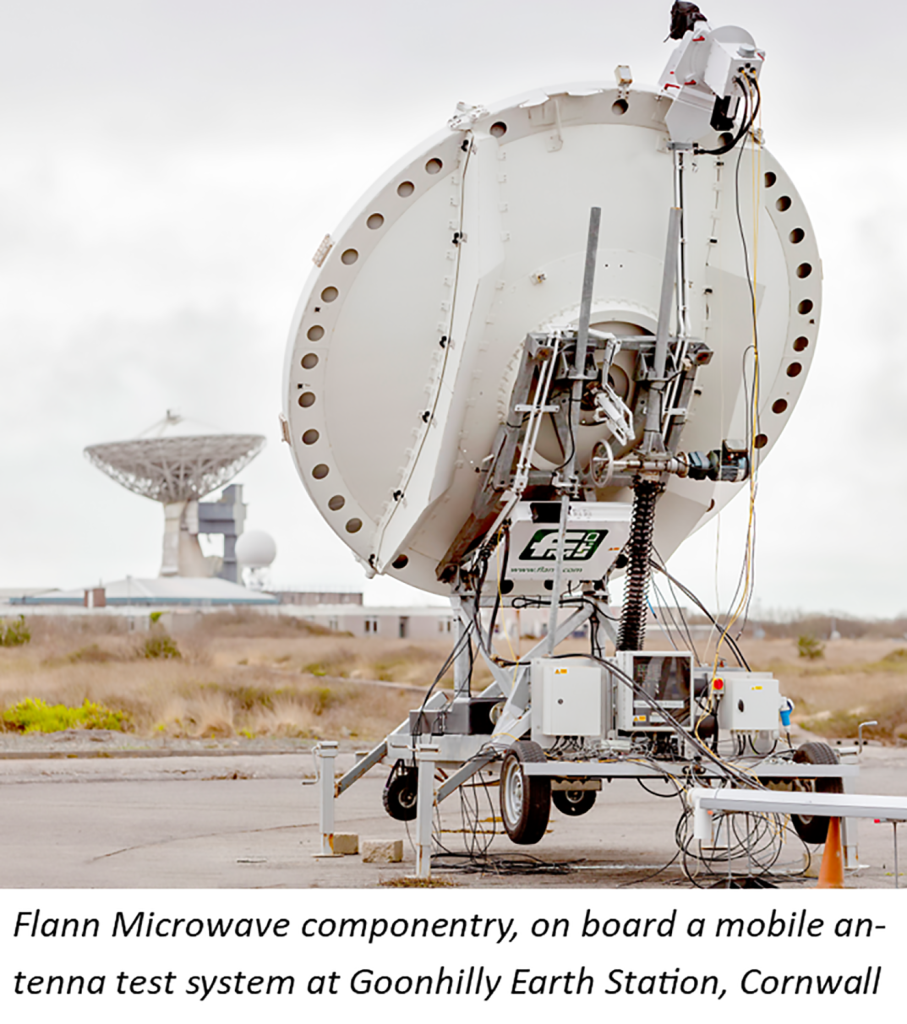As with most technology, waveguide has been no exception to a miniaturisation over the years caused by a constant drive for higher frequencies. This is due to the benefits discussed in the first post of our blog series about waveguide’s future markets. However, to still achieve a useable power within these millimetric designs a higher power density has been required which brings with it issues with overheating, material instability, and electrical breakdown as further discussed in the second post. Waveguide out-performs other transmission line methods with its inherent robustness, power densities, and manufacturability at higher frequencies, which makes it an ideal candidate for space-based communication systems.
 The space industry has some particularly unique technical requirements to enable spacecraft and satellites to function effectively: extreme temperature changes, large pressure differentials, intense cosmic rays and ionising radiation from the Sun, outgassing, even potential collisions with space debris are all challenges which need robust solutions, but there are huge rewards for overcoming these difficult issues. As space launches become more efficient and cost effective, especially to low Earth orbits, the future space market has massive potential in terms of growth and demand of new technologies. One prominent current example of this expansion of space industry innovation is the numerous recent launches of new satellite internet constellations, which are planned to use tens of thousands of small satellites to provide wireless satellite internet connections worldwide, revolutionising the communication and data systems in remote regions.
The space industry has some particularly unique technical requirements to enable spacecraft and satellites to function effectively: extreme temperature changes, large pressure differentials, intense cosmic rays and ionising radiation from the Sun, outgassing, even potential collisions with space debris are all challenges which need robust solutions, but there are huge rewards for overcoming these difficult issues. As space launches become more efficient and cost effective, especially to low Earth orbits, the future space market has massive potential in terms of growth and demand of new technologies. One prominent current example of this expansion of space industry innovation is the numerous recent launches of new satellite internet constellations, which are planned to use tens of thousands of small satellites to provide wireless satellite internet connections worldwide, revolutionising the communication and data systems in remote regions.
 Of course, the space industry also includes terrestrial technologies, requiring waveguide solutions for satellite communications via ground terminals and tracking stations. Flann has an established heritage of working in the terrestrial space industry, for example we have worked with our fellow Cornish organisation Goonhilly Earth Station for many years. We have provided Goonhilly with waveguide parts for their space communication systems, along with bespoke antenna setups and test rigs. Looking ahead to the near future, Cornwall’s Space Cluster, which Flann is a key member of, is rapidly becoming a world leading technology destination for business. At the heart of it is Cornwall Spaceport, with a dedicated horizontal launch site and a unique set of facilities, Cornwall is set to become one of the main hubs of the UK space industry. In recent years we have also released some successful designs of space switches, providing technical solutions within the “New Space” market of lower cost high efficiency instruments, and as this market grows exponentially, we will continue to develop new innovations.
Of course, the space industry also includes terrestrial technologies, requiring waveguide solutions for satellite communications via ground terminals and tracking stations. Flann has an established heritage of working in the terrestrial space industry, for example we have worked with our fellow Cornish organisation Goonhilly Earth Station for many years. We have provided Goonhilly with waveguide parts for their space communication systems, along with bespoke antenna setups and test rigs. Looking ahead to the near future, Cornwall’s Space Cluster, which Flann is a key member of, is rapidly becoming a world leading technology destination for business. At the heart of it is Cornwall Spaceport, with a dedicated horizontal launch site and a unique set of facilities, Cornwall is set to become one of the main hubs of the UK space industry. In recent years we have also released some successful designs of space switches, providing technical solutions within the “New Space” market of lower cost high efficiency instruments, and as this market grows exponentially, we will continue to develop new innovations.
 As previously discussed, the space industry has many inherent challenges: for ground-to-space communication technology one of the main limiting factors is the constituents of the atmosphere itself. With the current frequency bands in use, water and oxygen molecules absorbs electromagnetic waves at 22.3GHz and 60GHz respectively, impacting communications and data transfer around these frequencies. In the future when even higher frequencies are in communication systems, the attenuation caused by the atmosphere will only increase and especially worsen when it rains. There are also technical challenges related to spacecraft working in the near vacuum of space, issues of outgassing and a phenomenon know as multipaction*. Here at Flann, all these obstacles are considered and mitigated during our R&D processes, using simulation modelling and real-world testing to produce the highest quality parts with the best possible durability for the rigours of space.
As previously discussed, the space industry has many inherent challenges: for ground-to-space communication technology one of the main limiting factors is the constituents of the atmosphere itself. With the current frequency bands in use, water and oxygen molecules absorbs electromagnetic waves at 22.3GHz and 60GHz respectively, impacting communications and data transfer around these frequencies. In the future when even higher frequencies are in communication systems, the attenuation caused by the atmosphere will only increase and especially worsen when it rains. There are also technical challenges related to spacecraft working in the near vacuum of space, issues of outgassing and a phenomenon know as multipaction*. Here at Flann, all these obstacles are considered and mitigated during our R&D processes, using simulation modelling and real-world testing to produce the highest quality parts with the best possible durability for the rigours of space.
As modern life requires the evolvement of what is possible, we find ourselves increasingly content to push the boundaries of waveguide performance.
*Multipaction is a cascading effect of electrons interacting with the surfaces of instruments, creating a chain reaction of more electrons being released and potentially damaging equipment.
Written by Leon Knight & Nathan Bayley
You can find out more about the solutions we offer for the SATCOM and Space market here.


